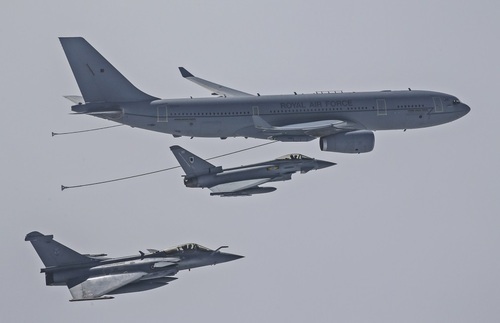The Combined UK-French Joint Expeditionary Force (CJEF) has taken another step forward with more than 5,000 personnel from the two countries coming together for Exercise Griffin Strike.
The exercise - which involved a joint French/UK headquarters planning and executing military activity for the first time - was designed to demonstrate full validation of the CJEF concept. The force is now available for bilateral, NATO, EU, UN or coalition operations.
The CJEF has been developed since 2010 as a product of the bilateral Lancaster House Treaty. It constitutes an early entry combined force capable of conducting non-enduring, complex intervention operations, facing multiple threats up to the highest intensity. It will be able to conduct offensive and defensive operations on land, in the air and at sea wherever UK and France national defence interests are aligned.
Designed to operate for up to 90 days, the CJEF will ultimately enable the UK and France to deploy forces rapidly to conflict zones ahead of a wider NATO or coalition operation, or to meet peace-keeping, disaster relief or humanitarian assistance requirements.
Griffin Strike marks a significant milestone in the generation of the force and demonstrates the ability to send a force including all three services into operations.
Aircraft including Typhoon and Rafale jets operated from RAF Leeming in North Yorkshire, while UK ships HMS Ocean, Bulwark and Duncan worked off the south and west coast of England with their French counterparts FS Dixmude, FS Cassard and FF La Motte Piquet.
On Salisbury Plain, elements of the Army’s 3(UK) Division and French 7th Mechanised Brigade including paratroopers, armoured units and infantrymen, exercised together, supported by Chinook and Apache helicopters.

